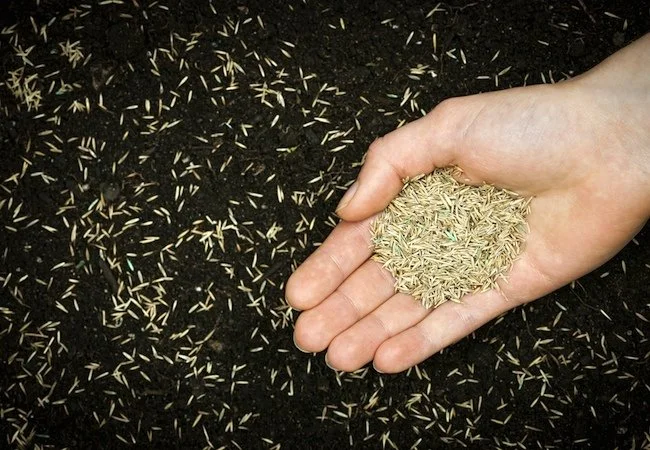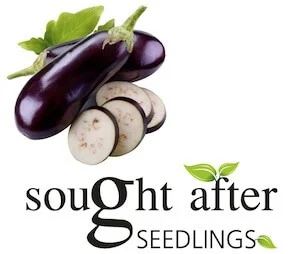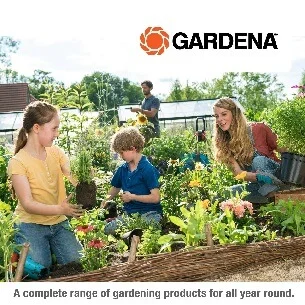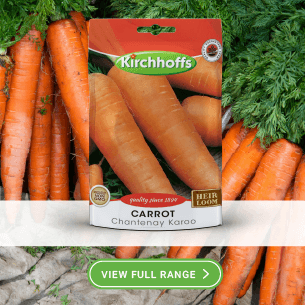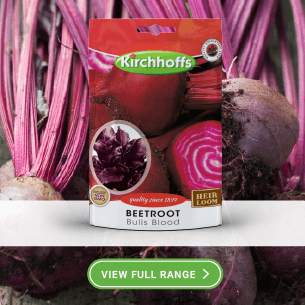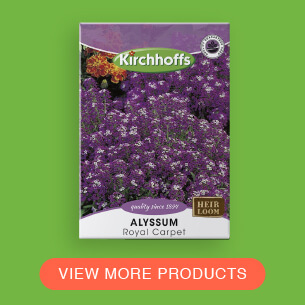How to Plant Grass Seed – a Step by Step Guide.
Whether you’re starting a new lawn from scratch or filling in bare patches, knowing how to plant grass seed correctly can make all the difference. In this guide, we’ll walk you through every step to ensure you get the best results, whether you’re in a hot, dry climate or dealing with heavy foot traffic. By following these simple steps, you’ll be well on your way to growing a lush, healthy lawn that will be the envy of your neighbourhood.
Step1: Choosing the Right Grass Seed
Selecting the Best Grass Seed for Your Lawn
Choosing the right grass seed is crucial to the success of your lawn. In South Africa, options like Kikuyu, LM, and Buffalo grass are popular due to their resilience in warm climates. However, your choice should also depend on factors such as soil type, shade levels, and lawn usage. Also have a look at our article on How to grow lawn in shade – Best lawn for shade.
- Kikuyu Grass: Kikuyu is a robust, medium to coarse-textured grass that spreads rapidly due to its creeping nature. Known for its vigorous growth, Kikuyu is relatively hardy and can endure heavy foot traffic. However, it does enter dormancy and turns brown when exposed to frost, making it more suitable for areas with mild winters.
- LM (Berea) Grass: LM Berea, an indigenous South African grass, is medium to coarse in texture and is highly valued for its adaptability. It thrives in both sun and shade, offering excellent drought and heat tolerance. Although its growth is slowed by frost, LM Berea is a reliable choice for shaded gardens, particularly under trees, where other grass types may struggle. See How to grow lawn in shade – Best lawn for shade.
- Buffalo Grass: Native to South Africa’s coastal regions, Buffalo grass is renowned for its resilience and low maintenance requirements. This grass features broad, coarse leaves and a rich, deep green colour. Its slow-growing nature makes it an ideal choice for those seeking a lawn that requires less frequent mowing. Buffalo grass is well-suited to coastal areas and provides a durable, aesthetically pleasing lawn.
Before purchasing, consider your local climate and the specific conditions of your lawn.
Step 2 Preparing the Soil For Sowing Grass Seed
Preparing Your Lawn for Seeding
Proper soil preparation is the foundation for a successful lawn. Start by removing any existing grass, weeds, rocks, and debris from the area. This step is important to ensure that your new grass seed has the best chance to germinate and grow into a level luch green lawn.
- Amend the Soil: To improve soil structure and fertility, add compost, kraal manure or lawn dressing, see How to Apply Lawn Dressing. This promotes better root development and water retention, crucial for the healthy growth of your lawn. You could also add some good lawn fertiliser at this point and dig it in thoroughly. – an organic fertiliser is best as this last longer and feeds the soil more evenly.
- Add bone meal or superphosphate: Incorporate bone meal or superphosphate into the soil to promote root development.
- Level the Ground: Use a rake to level the soil and remove any high spots or depressions. A flat, even surface helps ensure uniform seed germination and prevents water from puddeling and redistributing the grass seed.
- Optional: Test the Soil: For optimal results, consider using a soil test kit to check the pH level of your soil. Most grass types thrive in slightly acidic to neutral pH levels (between 6.0 and 7.0). If your soil is too acidic, add lime to raise the pH. If it’s too alkaline, adding sulphur can help lower it.
Thorough soil preparation will make a significant difference in the overall success of your lawn.

Step 3: How to Sow Grass Seed
How to Plant Grass Seed for Optimal Growth
Once your soil is prepared, it’s time to sow the seeds. This process requires careful attention to ensure even distribution and good seed-to-soil contact. Below, you’ll find specific sowing instructions for Kikuyu, LM Berea, and Buffalo grass, tailored to South Africa’s climate.
How to Sow Kikuyu Grass Seed
Best Time to Sow Kikuyu lawn Seed: Spring (September to November) and Summer (December to February) in South Africa.
Kikuyu grass is a popular choice in South Africa due to its vigorous growth and hardiness. To achieve the best results when sowing Kikuyu grass:
Prepare the Soil: After preparing the soil, create shallow grooves in the soil surface that are about 2 cm deep and spaced 10 cm apart. These grooves will help the seeds settle in and increase the chances of even germination.
Mix with Sand: Mix the Kikuyu seeds with fine, dry sand. This helps bulk up the seed mixture, ensuring an even distribution when sowing.
Sowing the Seed: Evenly spread the seed and sand mixture into the grooves. This method ensures the seeds are well-positioned for optimal growth.
Cover and Compact: Gently cover the seeds with soil, ensuring they are not buried too deeply. Firmly trample the soil with your feet to secure the seeds in place without over-compacting the soil. For larger areas, using a lawn roller can be more efficient.
This method ensures that Kikuyu seeds are in close contact with the soil, promoting faster germination and healthier growth.
How to Sow LM (Berea) Grass Seed
Best Time to Sow LM Grass: Spring (September to November) and Summer (December to February) in South Africa.
LM Berea, also known as Dactyloctenium Australe, is an indigenous grass that thrives in both sun and shade, making it a versatile choice for South African lawns. Here’s how to sow LM Berea seeds:
Mix with Sand: Combine the LM Berea seeds with fine, dry sand or bone meal to bulk up the mixture, which aids in even distribution during sowing.
Sowing the Seed: For even coverage, broadcast the seed mixture across the prepared soil. To achieve uniformity, divide the seed mixture into two parts. Spread one part by moving up and down the lawn, and the other by moving across the lawn.
Rake Lightly: Gently rake the area with a steel rake to cover the seeds with a very thin layer of soil—no more than 3 mm deep. Since LM Berea seeds require light for germination, avoid burying them too deeply.
Compact the Soil: Lightly press down the soil using a roller or by trampling it underfoot. This step is critical as it helps secure the seeds, reduces the risk of them being washed away, and enhances moisture retention.
Following these steps will help ensure your LM Berea lawn establishes quickly and evenly.
How to Sow Buffalo Grass Seed
Best Time to Sow Buffalo Grass Seed: Spring (September to November) and Summer (December to February)
Buffalo grass is prized for its resilience and low maintenance needs, making it a great option for many South African gardens. The process for sowing Buffalo grass is similar to that of LM Berea:
Mix with Sand: Blend Buffalo grass seeds with fine, dry sand to ensure even distribution during sowing.
Sowing the Seed: Distribute the seed and sand mixture evenly across the prepared soil. For even coverage, consider dividing the seed mixture and spreading it in different directions across the lawn.
Rake Lightly: Lightly rake the area to cover the seeds with a thin layer of soil, about 3 mm deep. Be careful not to bury the seeds too deeply, as they need light to germinate.
Compact the Soil: Use a roller or gently press the soil down with your feet to ensure the seeds make good contact with the soil, which helps with moisture retention and prevents wash-away.
This method ensures that Buffalo grass seeds are well-placed for optimal growth, resulting in a durable, lush lawn.

Step 4: Watering and Aftercare
Watering After Planting:
Immediately after sowing your grass seeds, it’s crucial to water the area thoroughly. This initial watering helps to settle the seeds into the soil and kick-start the germination process. Use a gentle spray to avoid displacing the seeds, ensuring the soil is evenly moist but not waterlogged. Continue to keep the soil consistently moist during the first few weeks, as the seeds will need a steady supply of moisture to germinate and establish roots. Avoid creating puddles, as excess water can lead to seed displacement and uneven growth.
Watering and Caring for Your New Lawn
Watering is critical during the germination period. Grass seed needs consistent moisture to sprout, but too much water can wash away the seeds or cause them to rot. Proper watering and aftercare are essential to ensure your lawn establishes well and remains healthy. Also look at Lawn Care Summer Tips.
Watering Schedule:
For the first few weeks, water the seeded area lightly twice a day. The soil should remain moist but not waterlogged, as excessive moisture can lead to seed displacement or rot. As the grass begins to grow, reduce the frequency of watering but increase the depth to encourage deep root growth. Ensure that no large puddles form during watering, as this can displace seeds and hinder uniform growth. Once the lawn is established, regular watering is still necessary to maintain its health, especially during dry periods.
First Mowing:
When your grass reaches about 60 mm in height, it’s time for the first mow. Set your mower blades high (about 40 mm) to avoid stressing the young grass. As the grass continues to grow, gradually lower the blades over subsequent mowings, adjusting to:
- LM Berea: In full sun, mow at 3 to 4 cm; in semi-shaded and shaded areas, mow at 6 to 7 cm.
- Buffalo Grass: In full sun, mow at 1.5 to 3 cm; in semi-shaded areas, mow at 3 to 4 cm.
- Kikuyu Grass: Maintain a mowing height of 2 cm.
Fertilizing:
Lawn fertilization is crucial for promoting healthy growth. For all grass types, apply lawn fertilizer approximately four times per year, ideally closer to the growing season to avoid encouraging growth before winter. Use a slow-release fertilizer to sustain your lawn’s health throughout the year. Regular feeding ensures that your lawn remains lush and green, reducing susceptibility to diseases and pests.
Top Dressing and Overseeding:
How to Scarify, Top Dress, and Overseed a Kikuyu Lawn.
Additional Maintenance for LM (Berea) Lawns.
Also see How to Start a New LM Lawn for Semi-Shade from Seed.
Mowing:
- Start Mowing: Begin mowing when the grass reaches 6 cm in height. Set the mower at its highest setting, no less than 4 cm.
- Height: In sunny areas, maintain a mowing height of 3 to 5 cm. If mowing shorter than 4 cm, increase mowing frequency to twice a week. Follow the 1/3 rule—never remove more than one-third of the leaf blade at a time.
- Frequency: Mow once a week under normal conditions, more frequently if cutting shorter than 4 cm.
Irrigating:
While LM Berea can survive without an irrigation system, regular watering during establishment is crucial. A shortage of water may cause the grass to go dormant and turn brown. If drought conditions persist, the grass may die. Once the root system is established, irrigation can be reduced.
Fertilization:
Apply 50 g per square meter of 5:1:5 or 3:1:5 fertilizer three times a year. Slow-release formulations are recommended to ensure consistent growth. Regular fertilization promotes a healthy, actively growing lawn that is more resistant to pests and diseases.
Pests and Diseases:
Healthy, well-maintained lawns are less susceptible to pests and diseases. Ensure good air flow to reduce humidity and avoid overwatering or underwatering, as both can stress the grass. For any specific issues, such as spots on leaves or unusual patches, consult a lawn care specialist.
Traffic:
In areas with heavy foot traffic, consider setting paving stones or sleepers into the grass to reduce wear. LM Berea is a creeping grass and will recover from light damage by spreading to cover bare patches.
Weeds:
To minimize weed growth, maintain a dense canopy of grass through regular mowing and fertilizing. A thick lawn prevents light from reaching the soil surface, inhibiting weed germination. Consult a specialist before applying herbicides.
Aerating and Top Dressing:
- Spiking or Hollow Tining: Use a garden fork to aerate compacted areas, ensuring deep penetration for better water and air flow.
- Top Dressing: Avoid top dressing LM Berea, as it may interfere with the grass’s growth.
Troubleshooting Common Grass Seeding Issues
How to Overcome Common Grass Seeding Problems
Even with the best care, you may encounter challenges such as bare patches, uneven growth, or issues with pests or diseases.
- Bare Patches: If you notice bare patches in your lawn, they may be due to improper seeding rates or poor soil preparation. Reseed the affected areas and ensure proper watering.
- Pests and Diseases: Keep an eye out for common lawn pests such as grubs or diseases like brown patch. Early detection and treatment can prevent these problems from spreading.
- Weeds: Weeds can quickly overtake a newly seeded lawn. Use a pre-emergent herbicide to prevent weed seeds from germinating, but avoid using it on the lawn until the grass is well established.
Final Tips for Sowing Grass Seed
The Secret to a Thick, Green Lawn
- Overseed: To achieve that enviable, thick green lawn, consider overseeding every autumn. This practice helps to fill in any thin areas and maintains the lawn’s density, ensuring it stays lush and healthy throughout the year. Additionally, using an organic fertiliser rich in nitrogen can promote vibrant growth and improve the lawn’s overall health.
- Watering: After sowing, water the area thoroughly to keep the soil consistently moist, but avoid waterlogging. Continue to keep the soil moist throughout the germination period, which typically takes 7 to 21 days depending on the grass type and weather conditions.
- Regular Monitoring: Check the lawn regularly to ensure even germination. If you notice any bare patches, reseed those areas as needed.
- Lawn Care Summer Tips.
- 7 Tips for a Healthy, Lush Green Lawn.
- How to grow lawn in shade – Best lawn for shade.
- How to Plant Grass Blocks or Sods for an Instant Lawn.
- How to Plant Grass Blocks or Sods for an Instant Lawn.
- How to Have a Green Lawn All Year.
- 8 Steps to an Organic Lawn.
By following these customized instructions for Kikuyu, LM Berea, and Buffalo grass, you’ll be well on your way to cultivating a vibrant and resilient lawn that thrives in South Africa’s unique climate.

How to Plant Grass Seed Q&A
Popular questions about planting grass seed:
Do you plant grass seed on top or under soil?
Grass seed should be sown on top of the soil but lightly raked in so that it is just barely covered. Generally, the seeds should be covered by no more than 3 mm of soil. This thin covering helps to protect the seeds while still allowing light to reach them, which is essential for germination. After sowing, it’s important to lightly compact the soil to ensure good seed-to-soil contact, which promotes better germination.
How do you plant grass seed in South Africa?
In South Africa, grass seed should be planted in spring (September to November) or summer (December to February) when temperatures are warm and conducive to germination. The process involves preparing the soil by removing any debris, creating a fine tilth, and possibly amending the soil with compost or fertilizer. Depending on the grass type, seeds should be mixed with sand for even distribution. Specific grass types like Kikuyu, LM Berea, and Buffalo grass have tailored sowing methods. For example, Kikuyu seeds are best sown in shallow grooves, while LM Berea seeds should be broadcast and lightly raked into the soil.
Do you need to cover grass seed?
Yes, grass seed should be lightly covered with a thin layer of soil, generally no more than 3 mm deep. This covering helps protect the seeds from being washed away by water or eaten by birds, while still allowing light to reach them. It’s important not to bury the seeds too deeply, as they require light to germinate. After covering, gently compact the soil to secure the seeds in place.
What is the best time to plant grass seed?
The best time to plant grass seed in South Africa is during the spring (September to November) or summer (December to February). These seasons offer warm temperatures and consistent rainfall, which are ideal conditions for grass seed germination and establishment. Planting during these periods ensures that the grass has ample time to grow and strengthen before the cooler winter months. Also see How to Have a Green Lawn All Year.
Should I fertilize before seeding?
Yes, fertilizing before seeding is recommended to prepare the soil and provide essential nutrients that support seed germination and early growth. It’s advisable to apply a balanced fertilizer, such as 5:1:5 or 3:1:5, to the soil before seeding. Additionally, incorporating superphosphate into the soil helps promote strong root development. Fertilizing before seeding sets the stage for healthy, vigorous lawn growth.
What month does grass grow best?
In South Africa, grass grows best during the spring and summer months, from September to February. During these months, the combination of warm temperatures and sufficient rainfall creates optimal conditions for grass growth. Spring is particularly favorable as the soil warms up and the days get longer, providing the ideal environment for grass seeds to germinate and establish.
What conditions does grass grow best in?
Grass grows best in conditions that include well-prepared soil, consistent moisture, and ample sunlight. The soil should be loose and well-draining, with a slightly acidic to neutral pH. Adequate moisture is crucial during the germination period, though the soil should not be waterlogged. Most grass types prefer full sun, although some, like LM Berea and Buffalo grass, can also thrive in partial shade. Regular mowing, fertilization, and proper watering practices further contribute to the healthy growth of grass.
Additional recources on growing grass from seed:
How to Sow LM Grass: https://mayford.co.za/product/lm-grass/#:~
Grass Planting 101: https://grassfactory.co.za/grass-planting-101/
Sowing Lawn Grass Seed: https://www.thegardener.co.za/the-gardener/lawn-care/sowing-lawn-grass-seed/
Sow Grass Seeds: https://www.lifeisagarden.co.za/sow-grass-seeds/
Creating a Healthy Lawn: https://www.seedsforafrica.co.za/blogs/news/creating-a-healthy-lawn
When is the Right Time to Plant a New Lawn?: https://landscapinginpretoria.co.za/when-is-the-right-time-to-plant-a-new-lawn/








